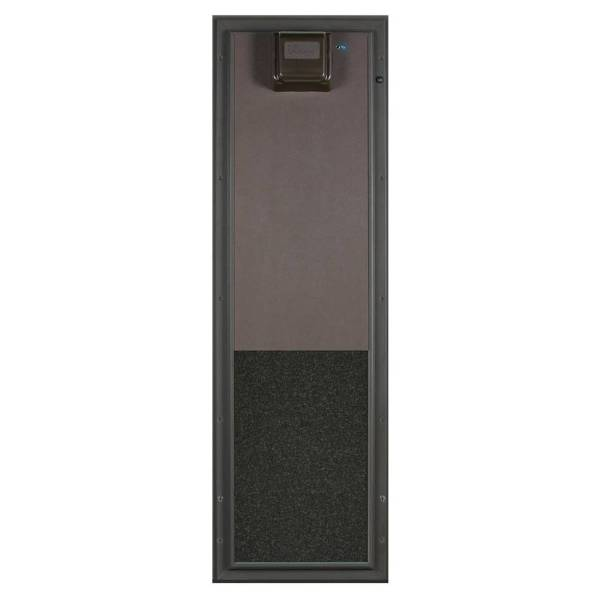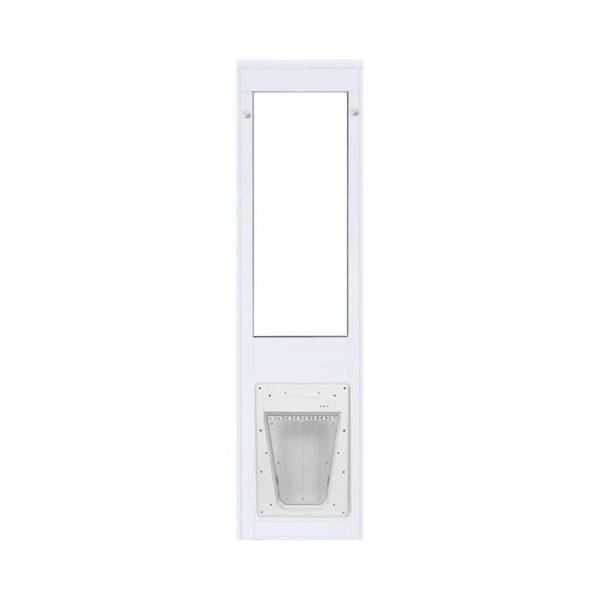737-215-3211

How Do Automatic Dog Doors Work: 12 Essential Tips for Pet Owners
Automatic dog doors are changing the game for pet owners everywhere. No more interruptions. No more getting up every five minutes.
So, what exactly are automatic pet doors? They use sensors, usually triggered by a chip on your dog's collar, to open and close automatically. It’s like having a personal doorman for your pet, one that works 24/7 without complaint.
Why are these pet doors gaining popularity? For starters, they make life easier. Electronic pet doors give your dog the freedom to come and go. Plus, they add a layer of security by only opening for your dog.
We’re diving deep into the world of automatic pet doors. We included 12 essential tips to help you understand how they work and how to make the best use of them. Whether you're a seasoned pet owner or a newbie, there's something here for you.
What are automatic pet doors?
Simply put, electronic pet doors that open and close automatically when your dog approaches. No more getting up every five minutes to let your dog in or out. These dog doors are designed to make life easier for both you and your pet.
Main components of an electronic pet door
-
Sensors: These detect when your dog is near. They can be activated by a microchip in your dog’s collar, motion detection, or other pet-activated devices.
-
Door panels: The part that actually opens and closes. They’re usually made of durable materials like plastic or metal.
-
Control units: The brains behind the operation. They process the sensor’s signals and control the door’s movements.
Types of automatic dog doors
There are different types of automatic pet doors and each one has its own power source, installation process, advantages, and disadvantages.
-
Electronic doors, like PlexiDor Electronic Dog Door, are a popular choice for many pet owners due to their advanced functionality. Electronic pet doors operate using a sensor that detects a signal from a special collar tag your dog wears. When your dog approaches the electronic pet door, the sensor activates and unlocks it, allowing your pet to pass through. Once your dog has entered or exited, the door locks automatically. The key benefits of electronic dog doors include enhanced security and convenience. Additionally, many electronic doors come with programmable settings, giving you control over when the door is accessible. However, these doors require a power source, either batteries or an electrical outlet, and tend to be more expensive than basic models.

-
Magnetic doors offer a simpler and more affordable option. These pet doors use magnets to operate, with your dog wearing a dog collar with a magnetic key. As your dog approaches, the magnet triggers the door to unlock, allowing entry and exit. After your dog passes through, the door re-locks automatically. The simplicity of magnetic dog doors makes them easy to use and set up, and they're generally less expensive than electronic or RFID options. However, they provide limited security, as they're primarily designed to keep out casual intruders rather than offer high-level protection.
-
RFID doors are known for their high security and advanced technology. These pet doors use a sensor to detect a microchip or RFID tag on your pet's collar. The sensor reads the unique RFID signal as your dog approaches, unlocking the door. After your dog passes through, the door locks again. The primary benefit of RFID dog doors is their high security, as each RFID tag has a unique code. Also, some RFID doors allow multiple pets, making them ideal for homes with more than one pet. However, RFID doors are typically more expensive due to their advanced technology and may require periodic maintenance or replacement of tags and sensors to ensure they work correctly.
How do automatic pet doors work?
Understanding how automatic dog doors work isn’t rocket science. Here’s a simple breakdown:
-
Dog approaches: Your dog walks up to the door. Whether it’s a chip, a magnet, or RFID, the sensor detects your dog’s presence.
-
Sensor activates: The sensor sends a signal to the control unit. This tells the door to get ready.
-
Door opens: The control unit sends a signal to the door panel. The door opens, much to your dog’s delight.
-
Dog passes through: Your dog strolls through the open door, probably wagging its tail in excitement.
-
Door closes: After your dog is through, the control unit signals the door to close. This keeps your home secure and the elements out.
12 Essential Tips for Dog Owners
So, you’re thinking about getting an automatic pet door. Good choice. These handy gadgets can make life easier for both you and your pet. Here are 12 essential tips to help you make the most of your automatic dog door.
1. Measure correctly

Before buying an automatic dog door, you need to get the size right. Measure your dog’s height and width. The pet door should be tall enough for your dog to pass through without ducking and wide enough to avoid squeezing. A pet door that’s too small can make your dog uncomfortable and hesitant to use it.
Related: How To Measure a Dog
2. Choose the right location
Think about where you want to install the door. Is it going to be on a door, wall, or sliding glass door? Each option has its pros and cons. Doors are easier to install, while wall installations give more flexibility in placement. Sliding glass doors can be trickier but offer a sleek look. Consider the weather exposure and convenience for your pet before the door installation process.
3. Select the right type
There are different types of automatic dog doors: electronic door, magnetic, and RFID. Choose the one that best suits your dog's habits and your security needs.
4. Consider security features
Safety first. Look for pet doors with lock modes and manual overrides. Lock modes allow you to control when the door can be used, and manual overrides give you control in case of power outages, interrupted battery operation, or malfunctions. This way, you can prevent unwanted guests and keep your home secure.
5. Train your dog gradually
Training your dog to use the automatic door is key. Start with the pet door turned off and let your dog explore. Use treats and positive reinforcement to encourage them to go through. Gradually turn on the door and repeat the process. Be patient and consistent; every dog learns at their own pace.
6. Regular maintenance
Keep your electronic pet door and sensors clean. Dust and dirt can interfere with the sensors, causing malfunctions. Regularly check for wear and tear and make necessary repairs. A well-maintained dog door will last longer and work more efficiently.
7. Monitor usage
Keep an eye on how often your dog uses the pet door. Some advanced doors come with activity monitors that track your dog’s movements. If your pet door doesn’t have this feature, consider installing a camera nearby.
8. Weatherproofing
An automatic dog door should be weatherproof. Look for pet doors with good insulation to prevent drafts and maintain your home’s energy efficiency. Some doors come with additional weather seals or flaps to keep the elements out.
9. Check for durability
Choose a dog door made from durable materials like high-quality plastic or metal. The automatic dog door should withstand frequent use and harsh weather conditions. Investing in a sturdy door will save you money on replacements and repairs in the long run.
10. Installation
Decide if you’ll install the door yourself or hire a professional. DIY installation can save money, but it requires some tools and skills. If you’re not confident in your abilities, hire a professional to make sure the pet door is installed correctly and safely. Follow the manufacturer’s instructions carefully if you go the DIY route.

11. Emergency plans
Have a plan for emergencies. If the power goes out or the door malfunctions, you need a way to control the pet door manually. Make sure everyone in the household knows how to use the manual override. This makes sure your dog can still access the door when needed.
12. Review and update
Periodically review the automatic pet door’s settings and functionality. Technology changes, and so do your needs. Make sure the door is still meeting your requirements and your dog’s needs. Updating your door or its settings can improve efficiency and security.
Is an automatic dog door right for you?
Automatic dog doors offer convenience, freedom, and peace of mind. They let your dog come and go outside to explore while you stay focused on other things. However, they require some thought — size, installation, training, and safety are all important.
Weigh the pros and cons based on your specific situation. Is your dog comfortable with new gadgets? Do you have a secure yard? Consider these factors before making a decision.
If you want to learn more about dog doors or puppy ownership, visit our blogs.


Leave a comment